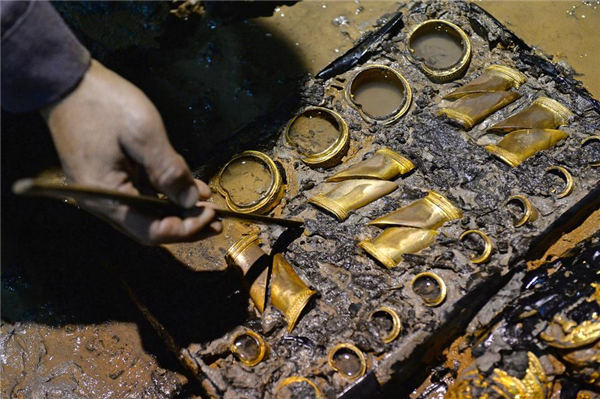 |
|
An archaeologist cleans the hoof-shaped ingots from the tomb of "Haihunhou" (Marquis of Haihun) that dates back to the Western Han Dynasty, in Nanchang, capital of East China's Jiangxi province, Nov 17, 2015. [Photo/Xinhua] |
Several ancient caldrons have been found in an ancient tomb, confirming the belief that it belonged to a deposed emperor from the Western Han Dynasty (206 BC-AD 24), archaeologists announced on Wednesday.
Nine ding, or ancient caldrons, were found during the latest excavation of the tomb of Haihunhou (Marquis of Haihun) in East China's Jiangxi province, said Yang Jun, who led the archaeological project.
"The number nine was only used by Chinese emperors in early feudal times, and it is common for tombs of emperors to be called nine-ding tombs," said Yang.
"Such traditions were relaxed before the Western Han Dynasty, but a set of caldrons is strong testament to the tomb owner's high status," he said.
Archaeologists believe the tomb belongs to Liu He, grandson of Emperor Wu. He was given the title Haihunhou after he was deposed after only 27 days as emperor.
Yang said the caldrons may have been used by the aristocracy to treat guests, as they were placed near other dinnerware, including a bronze liquor kettle and stoves. But others said the caldrons were commonly used for rituals.
The main coffin of the tomb will be opened next Saturday, said Yang.
The cemetery, the most complete known Western Han Dynasty cemetery, covers roughly 40,000 square meters and contains eight tombs.
|
|
|
|
|
|
|
|
